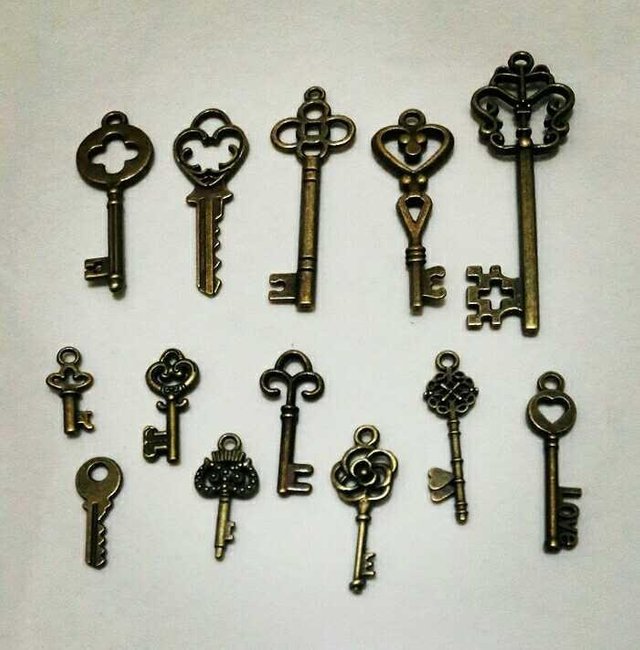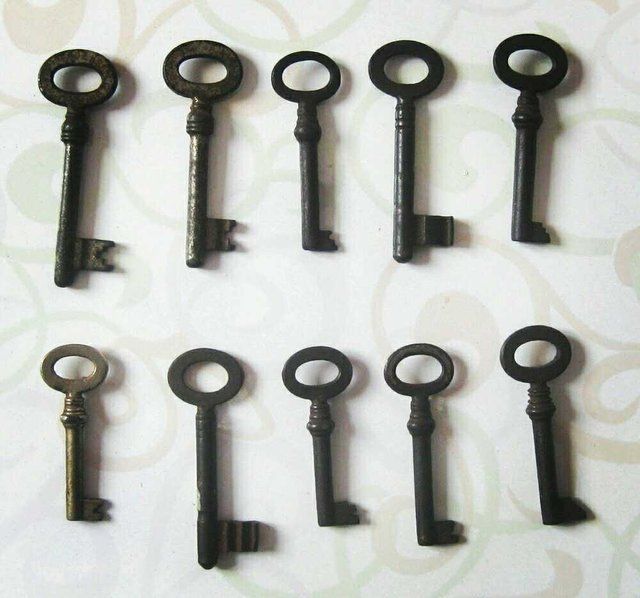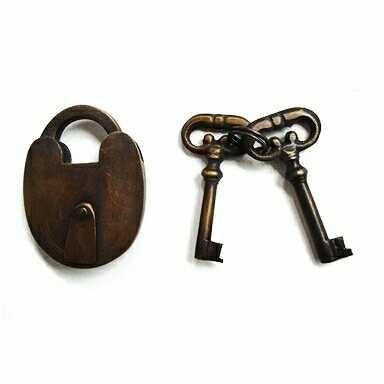do you know the origin of the KEY?
Hallo friend steemit, maybe you do not know much about the origin of the key.
Good thing there's a key. If there are no keys we will not feel safe leaving objects, whether houses, cars, or drawers.
The oldest key example is found in the ruins of Khorsabad Palace near Nineveh. So, it is suspected the key existed since 4,000 years ago.
 The shape is simple, like a doorstop home in the countryside.
The shape is simple, like a doorstop home in the countryside.
This "key" consists of two vertical bars, one horizontal, and a key. When the horizontal bar is inserted in the gap of two vertical bars, from the first vertical bar will descend the small slim rods that will enter the horizontal section holes. Horizontal bars stuck, the door was smashed.
To open, use a similar toothbrush key. Only, the fur is replaced short stems-slim. When stuck in the middle gap of the first vertical bar, the key rods will push up the locking rods so that the horizontal bar passes withdrawn. This principle serves as the basis for making the key lock.

Similar keys are also used in Japan, Norway, and the Faroe Islands. In fact in Egypt, India, and Zanzibar the key is still used today.
The keyhole hole was first made by the ancient Greeks on a wooden latch with a coco planted at the door. The keychain of a long crescent-shaped wood fits the keyhole configuration. The movement of the key will lift the hook peg. This tool provides very little security, its function just as an obstacle.
For metal keys, the Romans were the first to make. The working principle is to refine Egypt's key principles. Stakes are made in various sizes with appropriate keys. Keyhole hole was made unusual, so the key is difficult to imitate. In order for the keychain to be small and easy to unlock, a bronze peg bracket spring is installed. The development of skills brings out beautifully decorated keys. Key shapes were disguised, such as animals, flowers, and birds. In addition to the key, the key is also decorated, often used as a pendant.
The Romans also credited as the inventor of the ward (barrier), whose working principle is still used today. Because it is made of metal, the key and its key can be made small. Some keys are designed as rings. However, this construction can be dismantled, simply by slipping a piece of metal.
This key working principle is then applied to locks or padlocks. The decorative padlocks are found in Chinese, Turkish, East Indian, and Russian societies. There are many strange designs, such as figures of gods, flowers, or animals. Sometimes the keyhole is installed in the hidden part.
The keys spread to Europe. The shape is even more complicated because the competing artists want to be recognized expertise. There are also keys designed to remove needles, poison darts, or knives when striking a fake key. 
Some famous names about locking include Linus Yale, Jr., who invented the pin-tumbler lock (peg). The first key was patented in 1861, and was refined in 1865. The Connecticut man's findings were rated as one of the safest keys and were first mass-produced.
Another figure is Robert Barron of England who in 1778 discovered the key lever-tumbler, the refinement of the ward key. Another Englishman, Joseph Brahmah, in 1784 patented a key with a cylinder lock. In 1818 Jeremiah Chubb perfected the Barron key into a detector key.
So long ago my writing, may be useful and biaa increase your insight all steamit sabahat all.
by @rizkydpr

toke kunci.....
To the question in your title, my Magic 8-Ball says:
Hi! I'm a bot, and this answer was posted automatically. Check this post out for more information.